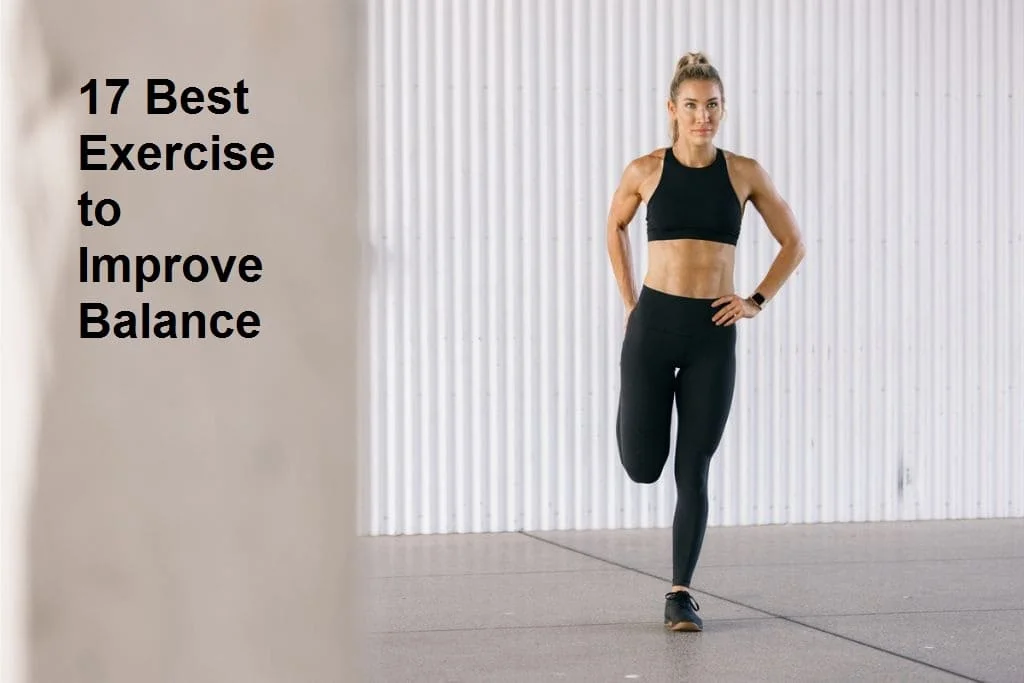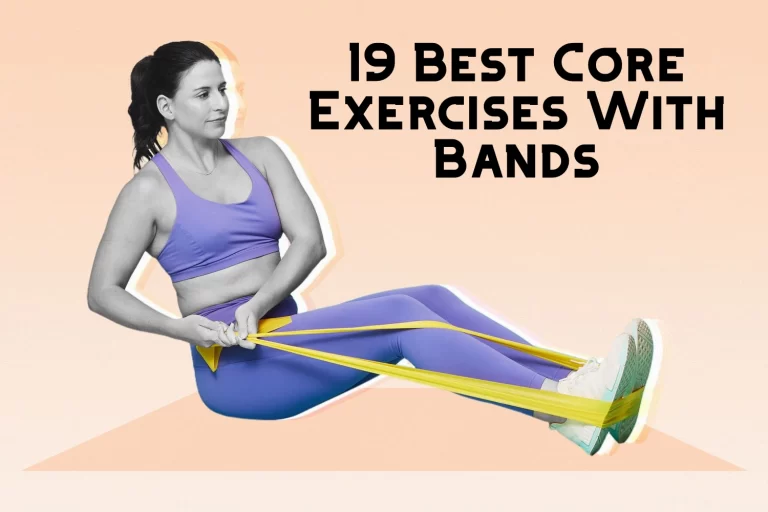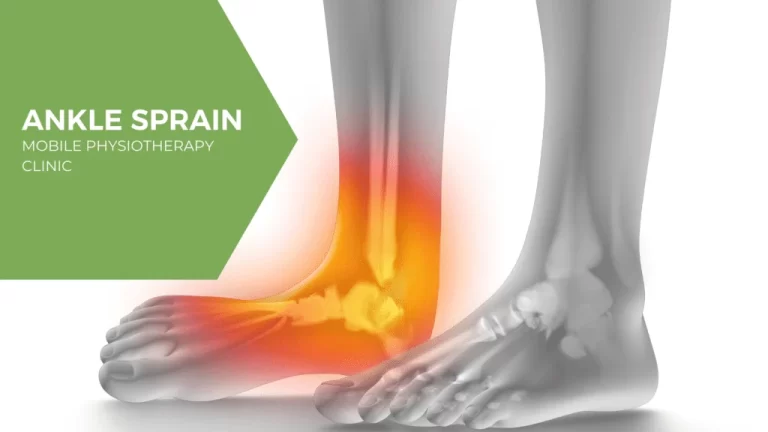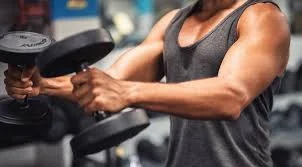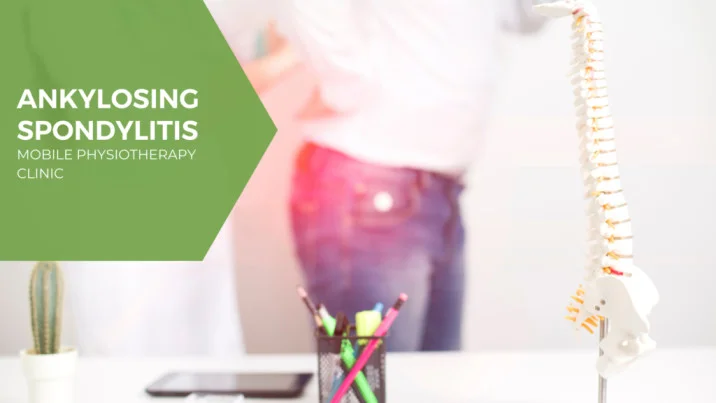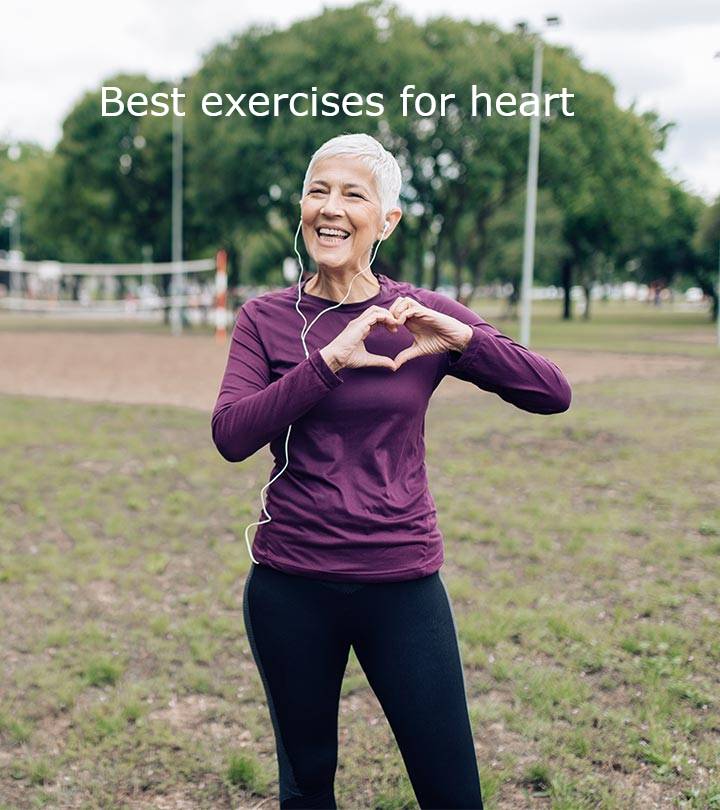17 Best Exercises to Improve Balance
Table of Contents
Introduction
Balance exercises help you maintain balance and confidence at any age. Balance exercises are especially necessary for older adults because they can help prevent falls and help them maintain independence. It is a good idea to include balance training as well as physical activity and strength training in your regular activities.
Maintaining balance while walking, running, jumping, or standing requires muscle mass. The main benefit of muscle strengthening exercise, our muscles help keep our bones and joints aligned to keep us upright. But balance also requires the interaction of three main sensory systems: one is visual, the one we see — that’s pretty simple. The second is the somatosensory neuroreceptor, which contains nerve receptors that allow us to feel and touch things and sense our body in space (known as proprioception). The third is the vestibular, a small but complex system of the inner ear that responds to gravity.
There are many activities or exercises that can help you with walking or locomotion and also maintain a good balance of your body. However, some balance exercises are useful to add to your daily routine and can help improve your stability. For example, balance on one leg when you stand for a while at home or when you are outside and stand up from a chair without using your hands or any support Or try walking a short distance in a row from heel to toe. You can also try tai chi, a form of movement training that can improve balance and stability and reduce the incidence of falls.
In this article, we describe the condition of balance and then consider the best exercise for this condition to improve muscle strength and flexibility. we have described many exercises for adults and children that both can perform.
Classification of the balance: Static and Dynamic Balance
Static balance: This is the ability to hold the body in a fixed position. Static balance is the ability to maintain postural stability and orientation, with the center of gravity over the base of support and the body at rest.
Dynamic Balance: Determining dynamic postural stability is more difficult. Dynamic balance is the ability to change the vertical projection of the center of gravity around the support platform. Dynamic balance is the ability to maintain postural stability and orientation with the center of gravity over the base of support while the body parts are moving.
How does balance work?
Balance is the ability to stand upright and move evenly, distributing body weight evenly. the vestibular system responsible for the balance of the body.
Sensory input through vision (vision).
Proprioception (the body’s ability to sense your movement and position).
Vestibular system in the inner ear (movement, balance, and spatial orientation).
Correct engagement of this sensory input.
Motor (movement) for your eyes and muscles. Injuries, medical conditions, vision problems,
certain medications, and due to age can also affect one or more of these components and cause imbalances.
What is proprioception?
Proprioception is your body’s ability to sense its own movements and how it is positioned in space (the area around the body).
The dorsomedial lemniscal tract (DCML, or simply “dorsal column”) is a sensory pathway in your central nervous system (brain and spinal cord) that interprets subtle sensations of touch, vibration, and position from the skin, muscles, joints, and nerves.
Sensory receptors in your skin, muscles, and joints respond to every movement in your body by sending impulses to your brain through your spine. Combined with other information from specific systems, such as visual input, balance, and movement input from the vestibular system in the inner ear, these signals help your brain determine where your body is in space.
The Romberg test determines whether your balance problems are related to spinal function by removing the visual and vestibular components that maintain balance. It can identify a neurological condition related to proprioception.
Balance system
The following systems provide information about the body and balance and thus maintain balance.
- Somatosensory/proprioceptive system
- Vestibular system
- Visual system
The central nervous system receives and integrates body orientation from these three primary sensory systems and then selectively activates muscles to create a correct, stabilizing torque. Under normal conditions, healthy subjects rely on 70% somatosensory information and 20% vestibular and 10% vision on a stable surface but switch to 60% vestibular information, 30% vision, and 10% somatosensory information on an unstable surface.
Somatosensory system
Controlling postural balance requires proprioceptive information unconsciously processed in the cerebellum. Proprioceptive information has the shortest delays, as monosynaptic pathways can process information in as little as 40-50 ms, and is thus the most important factor in postural control under normal conditions.
Vestibular system
The vestibular system creates compensatory reactions to head movements:
Postural reactions (Vestibulo-Spinal Reflex) – keep the body upright and prevent falling if the body suddenly loses balance. Motor reactions of the eye (Vestibulo-Ocular Reflex) – allow the eye to remain constantly focused when the head moves. Visceral reactions (Vestibulo-Colic Reflex) – help keep the head and neck centered, stable, and shoulders up. To achieve this, the vestibular system measures head rotation and head acceleration through the semicircular canals and otolith organs (utricle and saccule).
Visual system
In disabled people, under normal conditions, the contribution of the visual system to the control of position is partially redundant, because the visual information has longer delays, up to 150-200 ms. Friedrich et al. found that visually impaired adults were able to adapt peripheral, vestibular, somatosensory perception and cerebellar processing to compensate for the lack of visual information and provide good postural control.
In addition, Peterka found that adults with bilateral vestibular deficiency can improve visual and proprioceptive information even more than healthy adults to achieve effective postural stability. The effect of visual field movement on postural stability depends on the characteristics of the visual environment and support surface, including the size, stiffness, or compliance of the support.
Exercise To Improve The Balance
Calf Raise
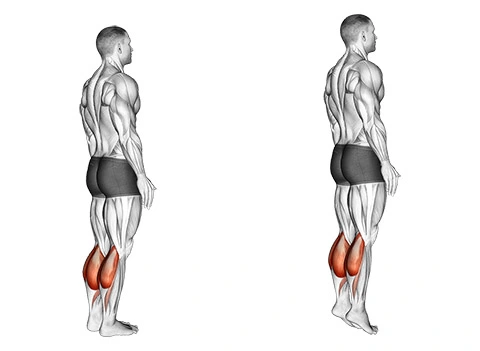
Stand on an exercise or yoga mat with your feet shoulder-width apart and toes pointed forward. If you don’t have a mat, you can do legs on the floor.
Some trampolines have handlebars that can also be useful during this exercise. you should Keep your back area straight, your shoulders relaxed, and your abs pulled in. During the exercise, you should not lock the knee and then gradually raise your heel for the exercise. Pause as much as possible while standing on your toes. Lower your ankle back to the surface and return to the starting position.
Standing calves activate two muscles that run along the back of the leg: the gastrocnemius and the soleus. These muscles are integral to ankle flexion and extension, which facilitate running and jumping. The gastrocnemius is also responsible for tandem walking with the hamstrings to control knee flexion, while the soleus muscle is responsible for proper balance and pumps blood from your leg back up to your heart.
When your calf muscles are weak they get strained and tear more easily. Calf raises exercise is a low-impact exercise for strengthening the gastrocnemius and soleus muscles which are part of the calf muscle. Strong, flexible calf muscles become the reason for the better stability and balance of your body, decreased risk of foot and ankle injuries, and better agility when running and jumping. Once strengthened calf muscle (fibers of the gastrocnemius provide the more rapid, smooth movement) makes this a great exercise for amateurs and athletes alike. The ability to lift a calf can also indicate old age and the ability to participate in daily life.
Avoid injury during exercise by focusing on slow movement, keeping a soft bend in the knees, and pushing your shoulders back to avoid rounding your spine. If you feel pain, stop moving and see a doctor. The calf muscles of a sedentary and inactive person may be overactive (tight) due to a lack of flexibility. It is important to stretch or foam roll both before and after exercise to prevent the problem from getting worse.
Variations of calf raise
- Seated Calf Raise.
- Single-Leg Calf Raise.
- Farmer’s Walk on Toes.
- Donkey Calf Raise.
Standing March
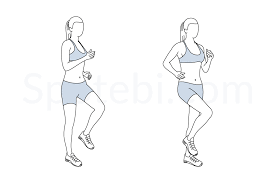
Standing march exercise you can do at your home, in a small space, or in a crowded gym, one of the first options that seem to come to mind is a long-distance walk with farmers. No one wants to give up physical training, although there are so many benefits of loaded trunks.
While standing on your right leg, lift your left knee one at a time to hip height toward your chest. Keep your upper body straight.
Raise your right leg and repeat the movement. Do not pause between steps. Continue alternating until the set is complete and move on. Make your movements slow and controlled.
You should keep your body in a proper alignment while the exercise which provides you balance and better posture.
Sit to stand
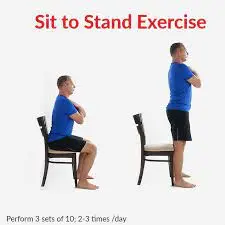
The sit-to-stand exercise, also known as a chair lift or chair leg, involves sitting and standing without using your hands. It helps improve muscle strength and balance, which helps you sit and stand. It’s also a great exercise for anyone recovering from surgery that affects mobility, such as a knee or hip replacement, or anyone looking to build core, thigh, hip, or gluteal strength.
Sitting against the front edge of a sturdy chair without armrests. The knees should be bent and the feet should be flat on the floor and shoulder-width apart and below the hips. Place your hands lightly on either side of the chair. Keep your back and neck as straight as possible, chest slightly forward. Breathe in slowly. Lean forward and shift your weight slightly in front of your feet. Exhale slowly as you rise. you should try to do this exercise without the support of the handle of the chair. Stand inhale and exhale completely. Inhale slowly while sitting. Tighten your core and abdominal muscles for maximum control of the descent. You should slowly lower yourself into the chair, not just fall back into the seat. Exhale slowly. Do this exercise 10-15 times. If necessary, do it less often until you get more. Rest for one minute, then do another set of 10-15 reps. Change the difficulty of the exercise from sitting to standing
If the exercise is too difficult, use a chair with strong armrests and push the armrests away to reach a standing position. Using the armrests, you can slowly lower yourself back to a sitting position. As it gets easier, try to use your hands less. You can also place a firm cushion or pillow on the chair to raise the surface. If this exercise is too easy, don’t use your arms to raise or lower yourself. You can also use a weighted vest, use dumbbells, increase the number of repetitions, or try a lower chair.
You may feel tired when you start your exercise routine. It is normal. You may experience muscle soreness that lasts for a few days. It is normal. when you are habitual with this exercise you feel stronger the you may not feel muscle soreness after the exercise. Use smooth, even movements. Don’t hold your breath during strength training. This can increase the changes in high blood pressure. do slowly inspiration through your nose and do expiration slowly through your mouth. which provides the realxion to your body.
Single leg balance
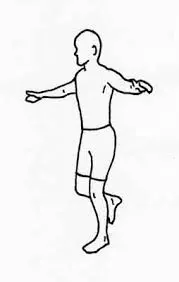
The single-leg balance exercise is a basic movement that offers many benefits for everyday life and overall health. Practicing this exercise improves proprioception or your body’s awareness of your position in space. This is important for coordination and safe movement.
It strengthens the stabilizing muscles, especially around the ankles, knees, and hips, reducing the risk of injury and promoting joint health. It also helps to improve balance, reduce the risk of falling, and increase mobility. Here we talk more about the benefits of the single leg balance exercise and how it can be a useful addition to your exercise routine, as well as modifications(modification of the exercise increases the strength of muscle which can also improve the balance of the patient.
Begin by standing in a comfortable position.
Bend the other leg to lift the foot off the floor, bringing the heel toward the back.
Hold your foot or ankle with your hand while you reach out with your other arm to help with balance.
Focus on your balance and breathing while holding this pose. Relax your feet on the floor and return to a standing position.
Keep the outstretched arm closer to the side so the lower body has to do more balancing work.
Single-leg balance training offers many benefits that improve performance in everyday activities. For example, many daily activities involve being on one leg (even for a short time), such as walking, climbing stairs, putting on pants, bathing, and stepping over obstacles. Balancing on one leg helps ensure that you can support your body during all of these movements. It can also improve proprioception, ie. your body and your ability to perceive its position in space.
Improving proprioception makes daily activities that require coordination easier and safer, which reduces the risk of missteps or falls. Finally, single-leg balance training can help improve joint health and reduce the risk of injury. Balance exercises help strengthen joint stability. By strengthening the muscles surrounding the joints, especially the muscles of the lower body, you develop flexibility for a variety of daily movements.
Tai chi
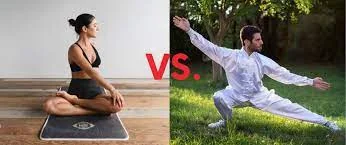
Tai chi is an ancient Chinese exercise that helps the elderly improve their balance and reduce the risk of falling. By reducing the risk of falling, seniors can reduce their chances of suffering a debilitating fracture. Tai chi has many physical benefits.
The movements also stretch and strengthen the muscles. such as yoga, and tai chi have a meditation quality that can trigger a relaxation response. This well-studied physiological change can help lower your blood pressure, heart rate, respiratory rate, oxygen consumption, adrenaline levels, and levels of the stress hormone cortisol.
Leg warmup
Stand with your feet slightly wider than your hips and bend your knees slightly. Get used to slowly shifting your weight from left to right. Arms can rest at your side; hands can be on hips. You can also rest your hand on the back of the chair for support. Shift your weight slowly and under control onto one leg, supporting about 70 percent of your weight on that leg. Then switch to the other leg. Repeat at least three times.
Torso Twist
Place your hands on your hips for this move so you can feel how much you rotate—you don’t want to rotate your hips. Rather, you want to turn away from the body. now do inspiration so you feel relaxed. As you exhale, just gently twist your body. Your hips naturally move a little with your body, but that’s for your spine. The knees should stay above the ankles. They must remain equally bent. It’s very subtle, but the small movements really make your core work. This increases the stability of the core. Let your soul guide how fast you move here. Turn at least five times on each side.
Step up
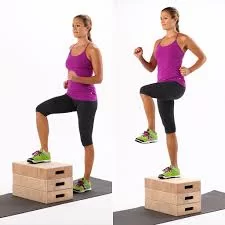
The step-up exercise progress slows down or progresses quickly at all fitness levels and fits into almost any training program to build unilateral muscles and strength in the quads and glutes. Here’s a step-by-step how to do it, how to train the muscles, the benefits, things to consider, and variations that will increase your stride.
For this exercise, you can use the stairs of your home. while progression period you can do the jump on the stairs. You push through your lead leg to pull yourself into a standing position on the bench. Then, slowly return to the starting position with the non-lead leg.
This exercise will increase the strength of the hip muscle and it is also depending on the strength of the. Make sure you can use the flat surface. Do bodyweight squats, holding dumbbells across your chest and standing about a foot from the box. Place the whole dominant leg on the box with the toes pointing forward. Push through the wire leg to stand. when you stand up the glutes work forward. With the extension of the knee, place one foot on a box, balance on one leg, or press the other leg onto a high knee. Step down gradually with the non-lead foot, relax, and repeat.
Variations of step-up
Sprinter Step up
Lateral Step up
Crossover Step up
Side walking
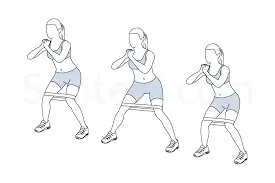
Side walking, also known as lateral walking, is an exercise that targets the muscles of the hips, thighs, and glutes while promoting stability and balance. Here’s how you can perform a basic side-walking exercise:
Stand with your feet hip-width apart. Maintain a slight bend in your knees. you should maintain your proper body alignment and engage your core muscles. Take a step to the side with your right foot, maintaining the slight bend in your knees. Follow by bringing your left foot back to the starting position, maintaining tension in your muscles. Continue stepping to the side, alternating between the right and left legs. Keep your steps controlled and deliberate. Throughout the exercise, focus on keeping your chest up and your shoulders back.
Engage your core muscles to stabilize your torso. Ensure that there is constant tension in the muscles of your hips, thighs, and glutes as you move sideways. Avoid completely straightening your knees during the exercise to keep the muscles engaged.
Focus on the quality of the movement rather than speed. Ensure that your feet remain parallel during each step, and don’t let your toes point outward. If you’re using a resistance band, choose an appropriate level of resistance that allows you to maintain proper form.
This exercise strengthens the muscles of the hips, thighs, and glutes. Improves lateral stability and balance. Engages the core muscles. Can be part of a warm-up or a lower-body strengthening routine. As with any exercise, if you have any existing health conditions or concerns, it’s advisable to consult with a healthcare professional or a fitness expert before incorporating new exercises into
Variations:
To increase the challenge, you can use a resistance band around your thighs or ankles while side walking.
You can also perform side walking on an incline or an unstable surface to further engage stabilizing muscles.
Squats
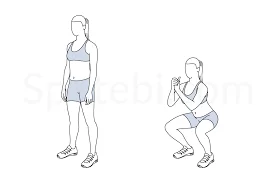
The squat is a strength training exercise where the person being trained lowers the hips from a standing position and then raises back up. When landing, the hip and knee flex, while the ankle dorsiflexes; conversely, the hip and knee joints extend and the ankle plantar flexes during standing. The squat also helps the pelvic floor muscles.
Start with the Standing position with your base of support slightly wider than your hips. Stand tall, gently pull your shoulders back, and gently lift your chest. now do expiration and try to pull your belly button back to contract your deep abdominal muscles, which provide stabilization to your spine and pelvis. flexion of your knees and keeping your upper extremity as straight as possible, as if you sitting on the chair behind you. When squatting, it’s good to let your body bend naturally, not just flex your chest or roll your shoulders forward.
If you’re too upright, your hips won’t open properly and you’ll put too much stress on your knees. Lower yourself as far as possible, leaning your upper body forward more than a few inches. Go as deep as you comfortably can. Avoid bending your thighs more than 90 degrees with your thighs parallel to the floor if you have knee issues.
Variation of the squats
Front Squat – The barbell is held in front of the body over the collarbones and shoulder muscles, either in a clean grip, as used in a barbell, or with the arms crossed and hands on top of the barbell. In addition to the muscles used in the back squat, the front squat also uses upper back muscles, such as the trapezius muscles, to support the bar.
Overhead squat – the barbell is held above the head with wide hands; however, it is also possible to use a tighter grip if the balance allows it.
Single-Leg Squat – The single-leg squat (SLS), also known as the unilateral squat, involves squatting with one leg instead of two (that’s a bilateral squat). Normally, the leg that is held off the ground moves behind the person when squatting, but alternatively, the person can place it in front of them.
Loaded squat jump – the bar is positioned in the same way as the back squat. The practitioner squats before jumping up and then landing in roughly the same position. The loaded squat jump is a loaded plyometric exercise used to increase explosive power. Variations of this exercise may include using a trap or dumbbells.
Hamstring Curl
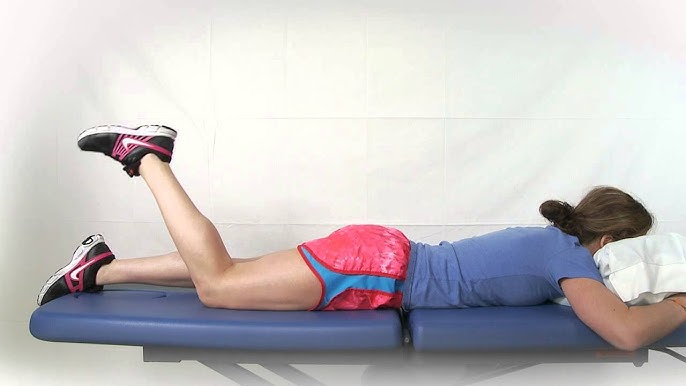
The hamstring curl is a commonly used exercise. It trains the thighs and gluteal muscles. Depending on what you have available and the level of difficulty you are looking for, there are modifications that will help you achieve your goals.
Lie on the floor. To do a floor curl, lie on your stomach with your arms in front of you, slightly wider than your shoulders. Raise your legs. From this position, lift one or both legs off the floor by bending the knees. While doing this, you should keep your knees on the floor. Keep your back straight and your knees together during the repetition.
Stretch your legs. Release your hamstrings by lowering your legs back to the floor. From here, do the recommended number of repetitions, about 12-15 if you are a beginner. Add weight. If they are too easy and you don’t notice your hamstrings contracting, increase the weight. You can do this by wrapping ankle weights around your lower legs or holding a bar between your legs as you lift them off the ground.
Tree pose
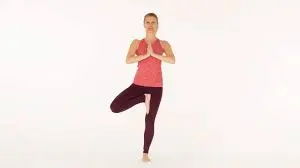
Tree pose (Vrksansana) is usually the first standing balance pose taught to yoga beginners because it is the easiest. Keep a sense of humor while learning to stand on one leg. It’s harder than it looks and every day is different. Don’t be discouraged if you startle or even fall.
Tree Pose strengthens the legs and core while opening the pelvis and stretching the inner thighs and groin muscles. One of the biggest benefits of yoga, and in general, is that it helps create better balance, which helps with all other physical activities.
Professional athletes often consider this balance advantage an advantage of yoga. which becomes more of a problem with age. Good balance and a strong core will help you stay active and healthy.
Take a moment to feel how both feet are attached to the floor so that your weight is evenly distributed on the four corners of each foot.
Begin to shift your weight to your right leg by lifting your left leg off the floor. avoid locking movement of the knee while exercising Bend the left knee and lift the sole of the left foot high on the inside of the right thigh.
Press the leg into the thigh and the thigh back into the leg with the same pressure. This helps keep both hips straight forward so your right hip doesn’t stick out. To keep your balance, fix your gaze on something that is not moving. Breathe 5-10 times, then lower your left leg to the floor and do the other side.
Tandem walking
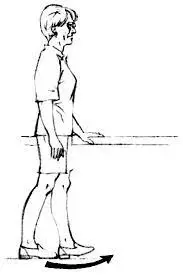
Tandem walking is a simple yet effective exercise that challenges your balance and proprioception. It involves walking heel-to-toe in a straight line, similar to how you might walk in a sobriety test. This exercise helps improve coordination and stability. Here’s how you can perform tandem walking:
Stand in a straight line with your feet touching, so your heel is against the toes of the opposite foot. First, you should maintain a proper alignment of the body and keep your hand side of the body. Lift one foot and place it directly in front of the other, with the heel of the front foot touching the toes of the back foot. Continue walking in this heel-to-toe fashion in a straight line. Keep your eyes focused straight ahead to help with balance.
Take small and deliberate steps to maintain control and balance. Concentrate on placing each foot in a straight line in front of the other. As you become more comfortable with tandem walking, you can increase the difficulty by walking for a longer distance or trying it with your eyes closed.
This exercise can Improve balance and coordination. Improve proprioception (awareness of body position during the activity).
Strengthens the muscles in the legs and core. Can be done almost anywhere without any special object. If you have balance issues or any existing health concerns, perform tandem walking under supervision or consult with a healthcare professional or a fitness expert. Tandem walking is a versatile exercise that can be incorporated into a warm-up routine, balance training program, or used as a standalone activity to improve overall stability and control.
Side Leg raise
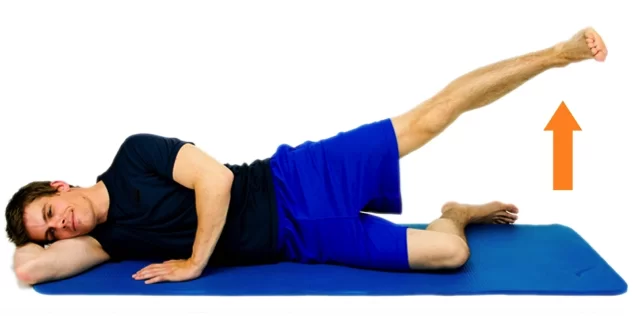
Side leg raises develop the strength of the hip and knee hip joints, which is ideal preparation for balance and also for exercises such as lunges, jumps, and squats. side leg raise is one type of strengthening exercise. you can also add the weight cuff for the strength.
Side leg raise is also known as the lateral leg raise. this exercise includes the basic hip movements which activate the hip flexor muscle and the hip adductor muscle of the hip joint. this exercise provides you with normal walking and balance.
The side leg raises exercise increases the strength of the inner thigh muscle. which also provides you a great locomotion and hip balance. The hip strength gain you get from this simple exercise will also improve your overall balance. We recommend a yoga mat or other similar padding so your hips don’t hurt from resting on a hard floor. If you are lying on something, follow these steps to raise your legs to the side:
Lie on your right or left side. The lower leg should be in line with the hip.
Support your upper body with your elbow.
Engage your glutes and hamstrings to lift your leg toward the ceiling.
When you feel a stretch in the back of your calf and inner thigh, lower the top back to the starting position. You’ll notice that the lower leg doesn’t work much in this variation of the side leg. If you want to engage your core and legs a little more, try this advanced variation:
Side Leg raise variations
Standing side leg raise with resistance band
Double leg lift
Straight Leg raise
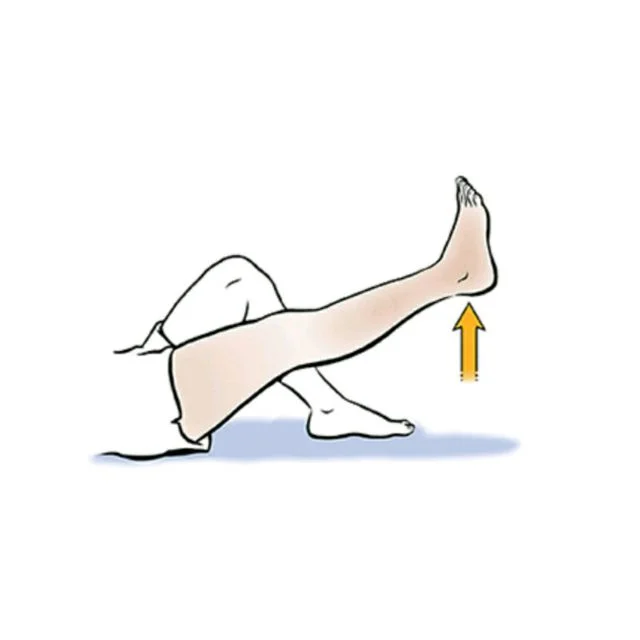
If you want to target your quadriceps muscle a little more, this is the option for you. This is directed at your quads in addition to the core and glutes, although it doesn’t have hip abduction like another side leg lift in this guide.
Follow these steps to get a flawless straight leg lift:
Lie on your back with one leg bent at the knee and the other completely straight.
For extra support, place your left and right arms at your side, palms down.
Keeping your knee straight over your shin, lift your leg toward the ceiling until it’s in line but not higher than the bent knee of the other leg.
To complete one repetition, lower the leg back to the starting position. Keep this movement going and complete the reps with the straight leg before switching sides. make sure you properly hold the leg in the air.
Carefully put it back or if you are trying to get a little ab workout, don’t let it touch the floor at all. Strength training and cable machines aren’t the only ways to tone your glutes, thighs, and hip grabbers. Lateral leg raises are great for targeting the upper legs and core in a new way and there are many variations to maintain functional strength.
This improves balance and prevents straining the hip joints or anything else injuries Strengthen your hamstrings, quadriceps, and hip abductors will protect your knees as well as the hips, so combining side legs with other lower body exercises on leg day is out of the question. you’ll be in top shape for everyday activities like walking, running and climbing.
Prone leg raise

Prone leg raises are good for activating and strengthening the hamstrings and glutes. Since we want to activate the hamstrings and glutes, focus on moving the thigh bone, not the leg. Keep your leg straight instead of going too far elevation – this helps relax the lower back, helping the pelvis stay neutral. Be sure to pull your abs in and up as you come off the floor.
Begin by placing your hands and knees on the floor with your arms and thighs crossed to the floor and extending straight up to the shoulders and hips. Keep your hips, back, neck, and head in the same alignment. Now squeeze your lower abdominal muscles, lift your knee, and slowly extend your other leg with the toes back until the foot is almost parallel to the floor. Then slowly turn back leg in the starting position, knee touching the floor. Save during this exercise the head, neck, back, and pelvis in the original line parallel to the floor.
Do 2 sets per session. Repeat three times a week with 48-72 hours between sessions. Your muscles have a chance to heal.
Heel-toe walking
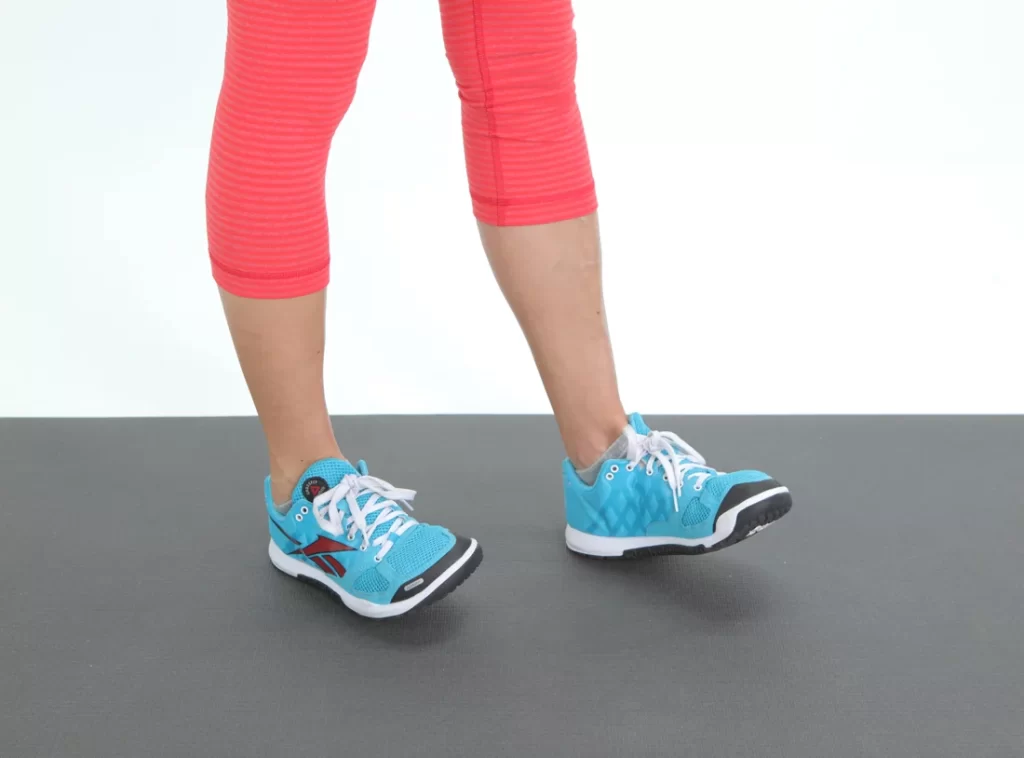
There are many exercises that improve balance. Heel walking is one of them. for heel-to-toe walking you don’t require any objects you need only a space and a clean environment. fo heel to toe walking you can take the help of the kitchen counter and do this exercise very safely. As you progress, move to an open area and practice with both arms hanging at your side as shown. start with the good standing position, which can lengthen the spine. Raise your arms to your sides.
During the modification phase, you can keep your shoulder on your chest. This hand position improves balance and challenges the heel exercise. Another great option is to add a weighted ball (close to your body) while you practice heel walking. Keep your eyes on the horizon. Use your peripheral vision to observe the surface and the surrounding space. This ability helps you walk without looking down. you can make a straight line with the help of the colorful tape and follow the path for balance.
(Note: At the start of this exercise it may be difficult so you can only practice the heel-to-toe walk without the use of any straight line. which also improves the balance). When you are four to eight steps forward, depending on your condition, step back and return to the starting position.
Bird Dog exercise

Bird dog training is core strength training. Your core is bounded by your hips, abdominal wall, diaphragm, and lower back. you can also know the exercise as a quadruped alternating arm and leg raise exercise. Bird dog is a strengthening and endurance exercise that promotes spinal stability. You don’t need equipment, but an exercise mat can help cushion your knees. Follow these steps to safely train bird dogs:
Kneel on the floor or exercise mat. Slowly bend forward and place your hands on the mat. Place them directly under your shoulders. Hold your hands shoulder-width apart, fingers facing forward. your hip and knee should be in the same alignment.
This is called the top of the table. Place yourself in a neutral position, tensing your core and abdominal muscles. Try not to engage in excessive arching and arching of the back. Stretch and extend your left leg slowly. Keep your feet and hips parallel to the floor. If you have a partner, have them place a light strip on your hips parallel to the waist of your pants. This will help determine if your hips are rotating and what adjustments you need.
At the same time, slowly raise and extend your right arm until it is parallel to the floor. Keep both shoulders parallel to the floor. Have a partner place a light bar on your shoulders to see if your shoulders roll. Carefully lower the arm and leg to the starting position.
Repeat for opposite limbs. About 8-10 seconds on each side.
Variations of Bird Dog exercise:
Bird dog with crunches. Start in a table position and then move into a bird dog. Hold and bring your elbow and opposite knee to your center. Squeeze your abs and then return to the extended position. Repeat on the other side.
Plank bird dog. Start in a high wood position. Keep your shoulders should be directly in front of the hands. Maintain a straight posture with your toes on the ground. do the extension of one leg and the opposite shoulder at the same time. Hold, return to the starting position, then repeat on the other side.
Lateral bird dog. Start in a standard bird dog position, then extend your arm and opposite leg. Move your arm and leg to the side a few inches away from your body. It will improve your core. Slowly return to the extended position. repeat another side.
Weight shifting
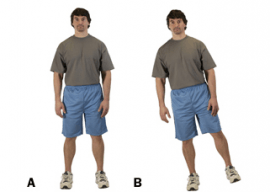
Weight transfer exercises involve rhythmically moving the center of gravity back and forth over a fixed platform. For example, in forward and backward weight transfer, the patient stands with one leg forward and the other leg backward (fixed base) and moves the body back and forth, Shuffle your body weight from one leg to another leg which is very easily done by you and you should also enjoy this exercise.
Body movements are usually minimized because movement is emphasized in the legs and feet. Patients should feel their weight shift from one leg to the other (or from the front of the leg to the back of the leg) as their body weight shifts rhythmically back and forth.
Side weights: Start with equal weight distribution while standing and put your body weight on the affected leg.
Body Weight Transfer: Begin standing with most of your weight on the unaffected leg and with your foot in front, shift your weight to the affected leg.
Lateral weight transfer while holding one leg: Shift your body weight to the affected side by lifting the foot of the unaffected leg off the ground while holding your hands for support.
Shift your body weight to a single-leg stance: Shift your weight to the affected side by lifting the foot of the unaffected leg off the ground while holding your hands for support.
Lateral weight shift to single leg stance without hold: Shift body weight to the affected side by lifting the foot of the unaffected leg off the ground and do not hold to accept 100% body weight.
Non-Crip Position: Shift your body weight to the affected side by lifting the foot of the affected leg off the ground and do not hold to accept 100% of your body weight.
One Leg Stand and Opposite Lower Extremity Movements: A great exercise to improve standing endurance and hip stability. Depending on PT’s recommendation, you can do it freely with or without support.
Three-Way Hip: While standing on the injured limb, move one leg out, side to side, and back.
Circles: Standing on the affected limb, move one leg in small clockwise and counterclockwise circles.
Who Can Benefit From Balance Training?
Everyone can benefit from balance training. Here’s a deeper look at how it can help you at different stages of life and fitness levels.
For athletes
Proprioception is constantly used in athletes for both rehabilitation and injury prevention purposes. Simply put, proprioception is the sense of joint position. By practicing balance exercises, the athlete gains a sense of control and awareness of his joints and their functions during body movement.
Ankle injuries are common in athletes due to twisting, turning, stopping, and starting.4 Even the strongest ankle can be injured if the athlete has not trained the neuromuscular system to respond correctly on different surfaces.
Balance training also gives athletes more strength and power because they learn to use their center of gravity more effectively.
For the elderly
If the child falls, he immediately gets back up and continues to move. But when an older adult falls, the consequences can be serious and even fatal. Every year, thousands of older Americans die from hip fractures caused by falls, and many of them regain independence after falling.
Balance training can improve stability in the elderly and help prevent falls and injuries. Just as athletes can train their bodies, seniors can use exercise programs and movements that focus on balance to reduce and prevent falls.
For the general population
Let’s be clear, balance training is for everyone. there are lots of benefits of the balance exercise which are very beneficial for your overall health.
Balance training:
Create muscle balance in the body.
Improves neuromuscular coordination by making the brain talk to the muscles.
Teaches your body to use your core to stabilize.
With all of this in mind, you can start incorporating simple balance training into your life today.
If you drop your keys or wallet, reach for them with one leg and lift the other leg straight behind you in the air, grabbing your stomach. Stand on one leg while brushing your teeth-alternate legs in the middle.
Equipment For Balance Training
When it comes to good balance exercises, one of the best tools is the BOSU (“Both Sides up;”). The BOSU is basically a hemisphere on a flat surface. The name comes from the fact that you can practice on both the ball side and the flat side.
The BOSU is an unstable surface on which you can practice squats, lunges, jumps, planks, and hundreds of other exercises.
If you don’t have access to a BOSU, you can create a similar effect by loosely rolling a yoga mat or towel while standing. Any unstable surface will do.
If you have difficulty with balance, do not use the accessory. Practice balance movements only on the floor.
Precaution while exercising to improve balance
Maintaining balance during exercise is crucial to prevent falls and injuries. Here are some precautions you should take while exercising for balance:
Consult with a healthcare professional: Before starting any exercise program, especially if you have pre-existing health conditions or concerns, consult with your doctor or a qualified healthcare professional to ensure that the chosen exercises are safe for you.
Start with a warm-up: Always begin your exercise routine with a proper warm-up. This helps increase blood flow to your muscles, making them more flexible and reducing the risk of injury.
Choose a safe environment: Perform balance exercises in a safe and clear space free from obstacles. Make sure the area is well-lit and that there are no tripping hazards.
Use appropriate footwear: Wear comfortable, well-fitted athletic shoes with good grip and support. This is especially important for activities that involve moving or standing on unstable surfaces.
Have a support system: When starting balance exercises, have a sturdy chair, countertop, or railing nearby for support. You can gradually reduce your reliance on support as your balance improves.
Progress gradually: Begin with simple exercises and progress to more challenging ones as your balance improves. Gradual progression allows your body to adapt and reduces the risk of injury.
Maintain proper posture: Stand tall with your shoulders back, and engage your core muscles. Proper alignment of posture is necessary for balance and stability.
Focus on a fixed point: Choose a spot in front of you and focus your gaze on it to help maintain stability. while exercising you avoid the focus on the feet which disrupts the balance.
Stay hydrated: Dehydration can affect your concentration and balance. you should keep drinking lots of water before the exercise(after the exercise session) or throughout the day.
Listen to your body: you should consider or notice the pain or any symptoms while the exercise or after the exercise this is prevent from any injury.
Include a variety of exercises: Incorporate a mix of balance exercises into your routine, including static and dynamic exercises. This improves the balance or stability.
Work on core strength: A strong core is essential for balance. Include exercises that target your abdominal and lower back muscles in your routine.
Always remember that balance training is a gradual process, and consistency is key. If you have any concerns or specific health conditions, it’s advisable to consult with a fitness professional or physical therapist to create a personalized balance training program that suits your needs.
The Benefit of exercise for improving balance
Regular exercise, particularly activities that focus on balance training, can offer a wide range of benefits for improving balance. there is a list of the benefits of these exercises.
Fall Prevention: Improved balance helps reduce the risk of falls, especially in older adults. Falls can lead to serious injuries, and exercises that enhance balance can significantly lower the likelihood of such incidents.
Stability and Coordination: Balance exercises challenge your stability and coordination, promoting better control over your body’s movements. This is beneficial in daily activities and can enhance performance in sports or other physical pursuits.
Muscle Strength: Balance exercises engage various muscle groups, including those in the core, legs, and ankles. Strengthening these muscles contributes to overall stability and helps prevent muscle imbalances, reducing the risk of injuries.
Joint Health: Balance training often involves movements that stimulate the joints, promoting joint health and flexibility. This can be particularly advantageous for individuals with arthritis or joint-related issues.
Posture Improvement: Balance exercises encourage proper body alignment and posture. This, in turn, helps alleviate back pain and enhances overall body awareness.
Proprioception Enhancement: Proprioception is your body’s ability to sense its position in space. Balance exercises improve proprioception, which is crucial for maintaining stability and making quick, coordinated movements.
Enhanced Cognitive Function: Some balance exercises, especially those that involve coordination and concentration, can contribute to improved cognitive function. This is particularly relevant for activities like yoga and tai chi.
Increased Confidence: As balance improves, individuals often experience increased confidence in their ability to move safely and navigate their surroundings. This boost in confidence can positively impact daily activities and quality of life.
Adaptability and Reactivity: Balance training often incorporates dynamic movements, helping individuals become more adaptable and reactive to changes in their environment. This can be beneficial in situations where quick adjustments are necessary.
Better Functional Movement: Improved balance translates to better functional movement in various activities, such as walking, climbing stairs, and reaching for objects. This can enhance overall mobility and independence.
Bone Density Maintenance: Weight-bearing and resistance exercises, which are often included in balance training, can contribute to maintaining or increasing bone density. This is particularly important for preventing osteoporosis and related fractures.
Long-Term Independence: By reducing the risk of falls and enhancing overall physical function, balance exercises contribute to maintaining independence and a higher quality of life as individuals age.
It’s important to note that the benefits of balance exercises extend across all age groups and fitness levels. Whether you’re a young athlete looking to improve performance or an older adult aiming to prevent falls, incorporating balance-focused activities into your exercise routine can lead to significant positive outcomes.
FAQ
Ten Exercises and Poses to Improve Your Balance and Stability …
There is a list of ten exercises to improve your balance and keep you steady on your feet.
Standing on one foot. The ability to stand on one foot for around ten seconds may improve proper balance and overall fitness of the body…
Heel-to-toe walking. …
Balance walking. …
Using a stability ball. …
Climbing stairs. …
Biking. …
Stretching. …
Yoga.
Three main types of standing balance exercises:
Type 1: Static equilibrium. Static balance is standing in one place without moving the legs, e.g. don’t step …
Type 2: Static balance + weight transfer. Adding body movements to static balance exercises is known as weight shifting. …
Type 3: Dynamic balance.
Improve your balance with yoga |
Yoga has proven to be one of the best ways to improve balance. It includes several balancing poses that can be done with the arms, legs, or even the head. Falling is a major risk for the elderly, but activities such as yoga can improve balance and reduce the risk of falling.
Exercises – Physiotherapy Treatments
They aim to improve the body’s ability to maintain posture and center of gravity and improve muscle reaction time and joint proprioception (the body’s ability to sense where joints and limbs are located). musculoskeletal physiotherapists can give you balance and proprioception exercises.
REFERENCES
- Balance exercises. (2023, September 20). Mayo Clinic. https://www.mayoclinic.org/healthy-lifestyle/fitness/in-depth/balance-exercises/art-20546836
- Vlce, K. A. M. C., & Barr, N. (2023, October 31). Balance Declines as We Age—Here Are 8 Helpful Exercises for Lasting Stability. Real Simple. https://www.realsimple.com/health/fitness-exercise/balance-exercises
- Sit to Stand. (n.d.). Hingehealth. https://www.hingehealth.com/resources/articles/sit-to-stand/
- Wilson, M. A. (2021, October 25). Heel Toe Walk for Balance – Sit and Be Fit. Sit And Be Fit. https://www.sitandbefit.org/heel-toe-walk-balance/
- V. (2022, November 15). Step Up To The Bench And Elevate Your Leg Gains with this Underrated Exercise. Muscle & Fitness. https://www.muscleandfitness.com/workouts/leg-exercises/step-up-exercise-how-to-benefits-variations/
- Tan, S. (2022, August 13). How to Do a Bird Dog Exercise. WebMD. https://www.webmd.com/fitness-exercise/how-to-do-bird-dog-exercise
- Stelter, G. (2022, November 29). How Seniors Can Improve Balance and Stability with Tai Chi. Healthline. https://www.healthline.com/health/senior-health/ta-chi#takeaway
- Supplements, S. (n.d.). WOMEN’S COLLECTION. Steel Supplements.
- Staff, P. (2018, March 30). How To Do Prone Leg Lifts Correctly. Pritikin Health Resort.
- Balance. (n.d.). Physiopedia. https://www.physio-pedia.com/Balance
- Cronkleton, E. (2019, March 22). 13 Exercises for Balance. Healthline. https://www.healthline.com/health/exercises-for-balance#exercise-for-seniors
- 6 Weight Shifting Exercises to Improve Balance. (2022, January 8). ADL Balance. https://www.adlbalance.com/blogs/adl-balance/dont-wait-for-weight-shifting-exercises-to-improve-balance
- P. (2021, September 13). Exercises to Help Improve Weight Acceptance and Standing Tolerance on the Lower Extremity Following Injury or Surgical Procedure. Baltimore MD Physical Therapy for Sports and Injury Rehab. https://physicaltherapyfirst.com/blog/2021/09/13/exercises-to-help-improve-weight-acceptance-and-standing-tolerance-on-the-lower-extremity/
- Ryt, A. P. (2021, July 16). How to Do Tree Pose (Vrksasana) in Yoga. Verywell Fit. https://www.verywellfit.com/tree-pose-vrksasana-3567128

